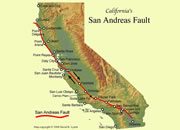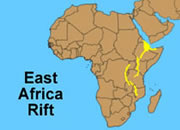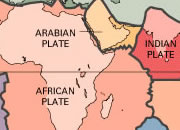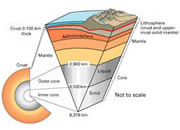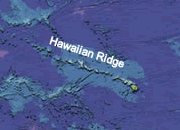
Illustration from USGS.
Plate Tectonics
Plate tectonics is the study of the lithosphere, the outer portion of the Earth consisting of the crust and part of the upper mantle. The lithosphere is divided into about a dozen large plates which move and interact with one another to create earthquakes, mountain ranges, volcanic activity, ocean trenches and many other features. Continents and ocean basins are moved and changed in shape as a result of these plate movements.
The sequence of maps on this page shows how a large supercontinent known as Pangaea was fragmented into several pieces, each being part of a mobile plate of the lithosphere. These pieces were to become Earth's current continents. The time sequence shown through the maps traces the paths of the continents to their current positions.
In the early 1900s, Alfred Wegener proposed the idea of Continental Drift. His ideas centered around continents moving across the face of the Earth. The idea was not quite correct - compared to the plate tectonics theory of today - but his thinking was on the proper track. In addition, a variant spelling of Pangaea is "Pangea". It appears in some textbooks and glossaries; however, Pangaea is the current preferred spelling.



